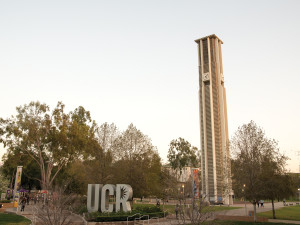UCR has recently announced a series of workshops to discuss student feelings toward the overall design of the campus, intending to gauge students’ investment in the layout of the campus, as well as giving them an opportunity to air their grievances with campus architecture. This also presents an opportunity for the campus to be improved by the very students who inhabit it.
In an effort to create a more inviting and comfortable environment to the ever-increasing student population of UCR, these workshops will empower the very students who live, work and study on the campus to make an environment where future generations of students can feel at ease. It is to this point that the editorial staff hopes to stimulate some conversation by suggesting ideas that may be a few initial steps toward the rehabilitation of certain parts of UCR in an effort to make it more agreeable to our large student body.
The first issue that can be fixed is one of the most obvious and arguably the easiest to implement. While UCR is a campus known for its lawns and citrus groves, the addition of more trees flanking the walkways around the whole of campus could easily make the somewhat arid Riverside weather much more comfortable, especially in the summer.
Any student who has had to walk the path from the Bell Tower to Olmsted would know that the trees bordering the lawn make the trek much more bearable, and provide that necessary shade to make the hot days of spring and summer endurable. Adding these same trees to the sides of the lawns by the Interdisciplinary Building and the Student Services Building could lead to better shade, and a natural umbrella during the unlikely California rain.
While there are already many walkways that benefit from this comfortable smattering of trees, planting even more can only benefit students, as well as making a more aesthetically pleasing dichotomy between the buildings of the campus interior and the plantlife we are known for.
A second improvement toward the future of the campus could be the renovation of the Rivera Library. Currently in its 30th year under the name of the UC’s first Latino chancellor, what better way could UCR honor its former leader than to improve the building that was named for him?
Many of the complaints levied against the building stem from the limited availability of study rooms for those CHASS majors who want to study and have access to the materials they need for research. Though not as simple or affordable as the planting of new trees, the library can add new floors both above and below ground, increasing the floor space and opening up more room for study spaces, computer carrels and regular shelf space.
Additionally, if the library were to expand, then the famed Eaton Collection for which the Rivera Library is so well known could expand, giving it a newer and larger space to occupy and enticing visitors to check out its new digs.
Like the Rivera Library, the HUB often comes under fire for not having enough seating or places for students to get together, leading to our suggestion for the creation of more communal areas and lounges for students.
UCR has recently revealed that the space which the Stacked Deli occupied will be turning into a commuter lounge, showing that the idea of expanding the leisure space in the HUB isn’t far from the minds of those who run the facility. However, the addition of new space in the HUB designed for social gathering, public computer use and additional seating for students eating at HUB Dining could be a wonderful extension to the services that the facility already supplies.
Allowing students a new space for seating and computer use may seem redundant in the face of the nearby Rivera Library, but this new space could also easily serve as a social hub for students to meet up with friends, classmates or study by themselves, creating a more open and comfortable space for future students.
UCR should be willing to make room in the budget for something that could be so potentially beneficial in the near future and the long run. Regardless of money constraints, the comfort of students during one of the more stressful moments should be one of the highest priorities on campus.
Expanding the campus in these ways could lead to breathing room, solving the ever-present issues of expanding into a space that has already been limited. Refiguring the space we already have with the trees and the HUB, and moving upward instead of outward with the library all represent the alleviation of the claustrophobia that threatens the student body.
None of the aforementioned improvements are likely to happen before those currently attending UCR graduate, but that isn’t what matters. What is important is that each and every student works together to make UCR the most welcoming community it can possibly be. UCR is the most diverse UC campus, so let us also work to make it the most inviting one.









